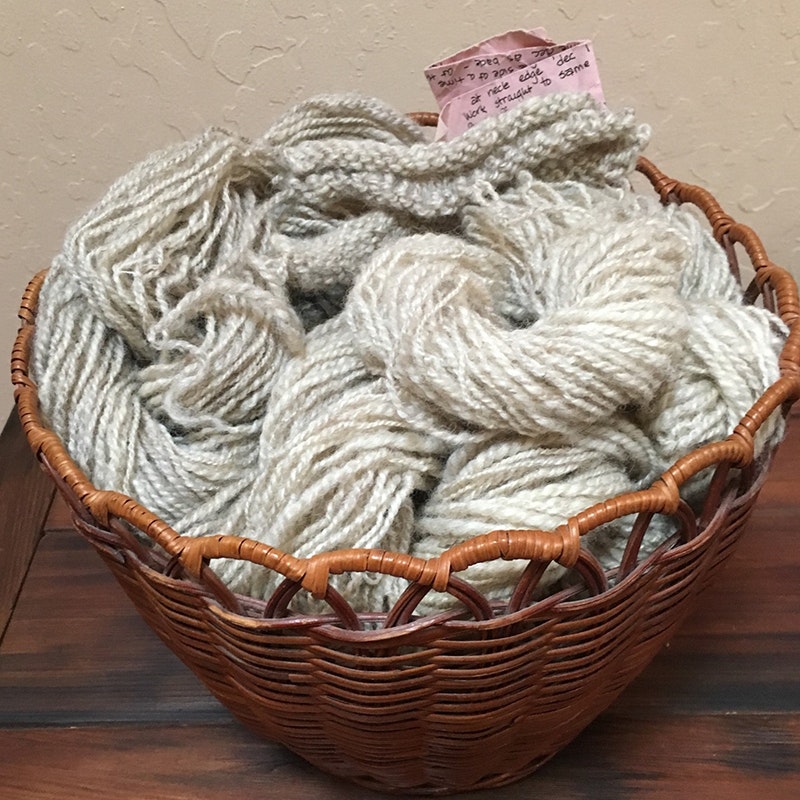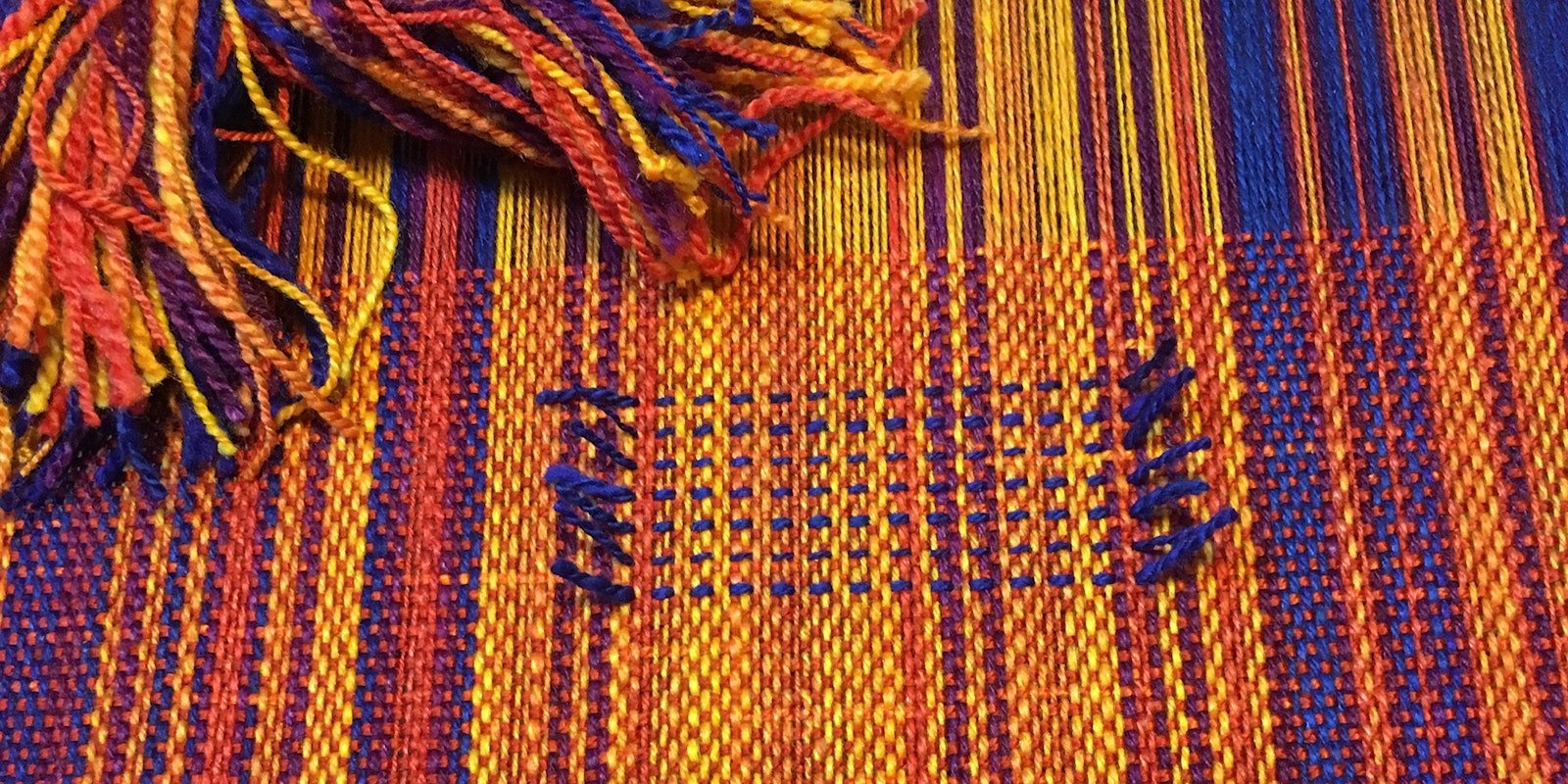Early on during the COVID-19 quarantine, I decided to clean up my studio. I had tables covered with projects and tools and bits and pieces of yarn and fabric. The floor was full of boxes and bins of yarn and fabrics that had not been put away. I installed some new shelving, and once I started opening up those bins and boxes, I found things long forgotten, abandoned projects, and yarns and fibers stored for projects never even started.
One of those long-abandoned projects was not even mine; it was a basket of handspun yarns that belonged to a weaver friend who had died. Barbara had been a longtime spinner, and these yarns, complete with knitting swatch and pattern, were uneven and rustic, likely the result of some spinning early in her career. The basket languished day after day at the studio sale held after she died until finally I brought it home, determined to make something with the yarns and not have them dumped ignominiously at the thrift store.

I dyed the yarns, wound a warp, and wove a shawl. Determined to use every last bit of Barbara’s yarns, I used lots of colors in the weft, and I incorporated some short pieces and leftovers as inlay in the fabric. I loved this little bit of color and added interest in the mostly plain-weave textile.
I had some rustic yarns of my own and time for another project, as I was still under quarantine, so I dyed my yarns and used some silk thrums as inlay for a second shawl. The inserts looked like rows of stitching, and I found them quite attractive. They were tidier than my own hand stitching, as they were defined by the sheds I put them in and beat in evenly by the beater. I used other short leftovers for soumak inserts and twining, again, in a mostly plain-weave textile.
Here’s how I did the inlay:
Set up
• Thread for plain-weave with a straight-draw threading of 1,2,3,4.
• Weave plain weave using treadles 1-3 versus 2-4.
Inlay
- Open up any one of the twill sheds: 1-2, 2-3, 3-4, or 1-4.
- Inlay a thrum as desired.
- Weave several picks of plain weave.
- Open the same shed as you did in step 1.
- Insert the second inlay thread.
- Repeat steps 1–5 until desired pattern is complete.
I was having so much fun! I planned another shawl, this time using some Polwarth Silk handspun and again using silk as the weft. I changed colors in the weft as I wove. I used some short bits for inlay and also inserted soumak and twining at intervals.

Playing with weft colors and adding inlay, soumak, and twining made a plain-weave shawl a favorite.
This shawl has turned into an unexpected favorite garment: warm, colorful, soft, and fun. The next thing left to try was inlay on garment-weight fabric. I wove shirt fabric using raw silk singles, using thrums from a previous raw silk length, also changing wefts, and inserting soumak and twining. It finished up nicely. There is plenty of fabric for a cut-and-sew garment, taking into consideration where the inlay bits will end up on the garment and whether they end up tails in or tails out.

Where the inlay will end up and whether the inlay tails will be on the inside or the outside need to be taken into consideration when weaving for sewing.
All of this experimentation has changed the way I look at weaving fabrics. Lately, I have a hard time just throwing the shuttle and want to stop every now and then and insert some short rows of inlay in everything!

